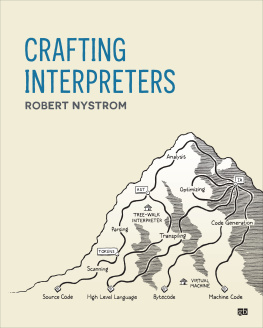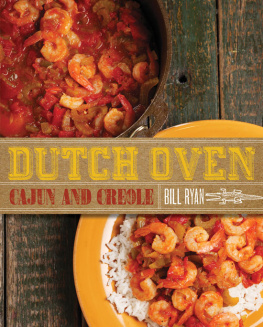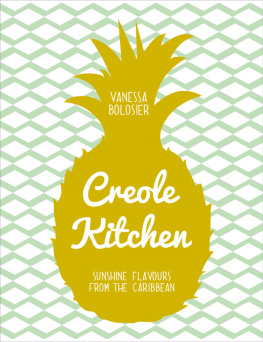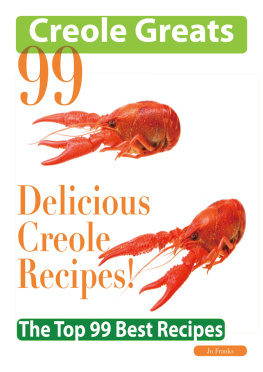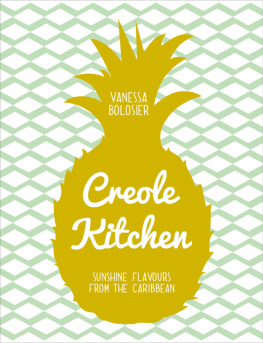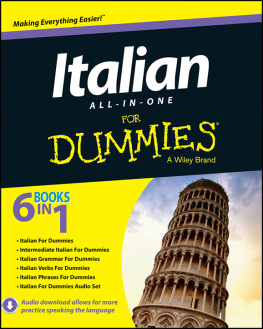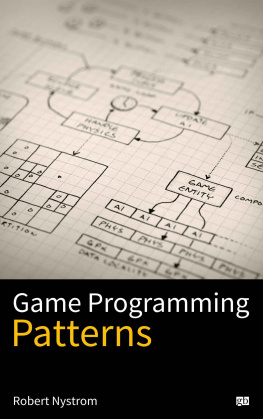Justin A. Nystrom - Creole Italian
Here you can read online Justin A. Nystrom - Creole Italian full text of the book (entire story) in english for free. Download pdf and epub, get meaning, cover and reviews about this ebook. year: 2018, publisher: University of Georgia Press, genre: Politics. Description of the work, (preface) as well as reviews are available. Best literature library LitArk.com created for fans of good reading and offers a wide selection of genres:
Romance novel
Science fiction
Adventure
Detective
Science
History
Home and family
Prose
Art
Politics
Computer
Non-fiction
Religion
Business
Children
Humor
Choose a favorite category and find really read worthwhile books. Enjoy immersion in the world of imagination, feel the emotions of the characters or learn something new for yourself, make an fascinating discovery.

- Book:Creole Italian
- Author:
- Publisher:University of Georgia Press
- Genre:
- Year:2018
- Rating:5 / 5
- Favourites:Add to favourites
- Your mark:
- 100
- 1
- 2
- 3
- 4
- 5
Creole Italian: summary, description and annotation
We offer to read an annotation, description, summary or preface (depends on what the author of the book "Creole Italian" wrote himself). If you haven't found the necessary information about the book — write in the comments, we will try to find it.
Creole Italian — read online for free the complete book (whole text) full work
Below is the text of the book, divided by pages. System saving the place of the last page read, allows you to conveniently read the book "Creole Italian" online for free, without having to search again every time where you left off. Put a bookmark, and you can go to the page where you finished reading at any time.
Font size:
Interval:
Bookmark:
CREOLE ITALIAN
| SOUTHERN FOODWAYS ALLIANCE The series explores key themes and tensions in food studiesincluding race, class, gender, power, and the environmenton a macro scale and also through the microstories of men and women who grow, prepare, and serve food. It presents a variety of voices, among them those of scholars, journalists, and writers of creative nonfiction. SERIES EDITOR John T. Edge SERIES ADVISORY BOARD Brett Anderson | New Orleans Times-Picayune Elizabeth Engelhardt | University of North Carolina at Chapel Hill Psyche William0s-Forson | University of Maryland at College Park |
Sicilian Immigrants and the Shaping of New Orleans Food Culture
JUSTIN A. NYSTROM
The University of Georgia Press
ATHENS
2018 by the University of Georgia Press
Athens, Georgia 30602
www.ugapress.org
All rights reserved
Designed by Kaelin Broaddus
Set in Minion Pro by Graphic Composition, Inc.
Most University of Georgia Press titles are available from popular e-book vendors.
Printed digitally
Library of Congress Cataloging-in-Publication Data
Names: Nystrom, Justin A., 1970 author.
Title: Creole Italian : Sicilian immigrants and the shaping of New Orleans food culture / Justin A. Nystrom.
Description: Athens : The University of Georgia Press, 2018. | Series: Southern Foodways Alliance : studies in culture, people, and place | Includes bibliographical references and index.
Identifiers: LCCN 2017058468 | ISBN: 9780820353562 (hardcover : alk. paper) | ISBN: 9780820353555 (pbk. : alk. paper) | ISBN: 9780820353579 (ebook)
Subjects: LCSH : SiciliansFoodLouisianaNew OrleansHistory. | Sicilian AmericansFoodLouisianaNew OrleansHistory. | Cooking, ItalianSicilian style. | Cooking, Creole. | ImmigrantsLouisianaNew OrleansHistory. | New Orleans (La.)Social life and customs.
Classification: LCC F 379. N 59 I 849 2018 | DDC 641.59763dc23
LC record available at https://lccn.loc.gov/2017058468
For Jess
Contemplating the people and moments who propelled me over the last decade to write this book, Im reminded of a collection of mementos and found objects that somehow made their way into a keepsake box in a sock drawer. Collectively these observations tell the story of how the story got told.
In the beginning there were the conversations with Peter Massony, who I only half-jokingly call my adoptive uncle. His stories of growing up Italian in New Orleans fired my imagination to craft a narrative of a people who contributed so much a place I love. I continued to find myself circling back to place and people with updates on what Id found and where I planned to head next. The idea of using food as a lens onto this world I owe entirely to the creatively verdant year that I spent at the Center for the Study of Southern Culture at Ole Miss. Without running into John T. Edge and his contagious enthusiasm for the Southern Foodways Alliance, this book might never have taken shape. And without the inspiration of filmmaker Joe York, I would not have come to embrace oral history in a way that is now so important to my career.
Launching into the real work brought me into contact with the American Italian Cultural Center and its devoted curator Sal Serio. He introduced me to the vast and largely untapped oral history collection created by the centers visionary founder Joe Maselli. At the New Orleans city library, my old friend Greg Osborn made it possible to pore through untold criminal court cases, periodically coming over with the ever helpful have you seen this? I find myself indebted to others who made critical oral histories possible, including Elizabeth Williams from the Southern Food and Beverage Museum, who introduced me to Joe Segreto. Becoming friends with Joe, who cared deeply about history, not only enriched my life but also helped me find many other people to talk with about these histories. Likewise, my former student Allegra Tartaglia brought me to see her grandmother, Rose Uddo Testa, and her friend Adele Chopin Uddo, which led to a phenomenal interview and an even better meal of eggplant parmesan. I must also thank archivists Kevin Williams and Sean Benjamin at Tulane and especially Bruce Raeburn, Lynn Abbott, and Alaina Hbert of the Hogan Jazz Archive.
Good folks, most of whom who Ive never met in person, have been quite generous with images or documents, including Michael Dauenhaer, Sophia Segreto, Colin Hulin, Vincent Mariano, and Ronnie Sciortino.
A true friend is someone who will patiently read a draft of a manuscript, and nobody fits this bill better than my Loyola colleague Mark Fernandez. Others, like Jack Davis and Gene Bourg, offered particularly useful insight into aspects of New Orleans that I had not before considered. Likewise, Jason Berry gave thoughts on style and approach. When it came time to publish, it seemed only fitting that I send it off to John T. Edge again, along with Pat Allen at UGA Press. Locally, our departmental assistant Crystal Ramey kept me on the rails while the team at Georgia, including Rebecca Norton and my gifted and long-suffering copyeditor Ellen Goldlust, and SFA's Sara Camp Arnold made this a much better book than it otherwise might be.
Last but hardly least, throughout all of this my wife Jess put up with this project. I still laugh at us working together in the same room and my interrupting her with did you know... ? And she answering, let me guess, this is about lemons. Ten years and two little boys later, our collaboration continues to flourish.
CREOLE ITALIAN
Uncovering the Sicilian Past in the Creole City
When peopleespecially those of Italian descenthear the phrase Sicilian New Orleans, they often think of Moscas, that Westbank mecca of old-school Italian cuisine; the muffuletta; or perhaps a corner grocery store in Mid City. They also often think of the Mafia. In short, they possess a patchwork of memories rather than a coherent understanding of the citys Sicilian past. The fact that my parents were born and raised in Chicago, a city that celebrates the ethnic diversity of its immigrant people, doubtlessly attuned me more than others to the Sicilian influence in New Orleans. For me, the citys European immigrantsGerman, Irish, and Sicilian, leavened by significant Jewish contributionsgave New Orleans the feel of one of the great urban spaces found in the North. Today I remain awestruck that such a crucial thread of the citys fabric has received so little systematic exploration. This book tells that dramatic story of the Sicilian experience in New Orleans.
Interpreting Sicilian New Orleans through the business and culture of food evolved organically. Tracing the contrails of cultural lore to their origin almost always led back in some form to the planting, harvesting, transportation, marketing, preparation, and consumption of food. Sicilian immigrants cut sugarcane, sold groceries, ran truck farms, operated bars and restaurants, and manufactured pasta. The more I burrowed into the topic, the clearer it became that Sicilians had much to do with shaping the citys crucial relationship with food and that food played a pivotal role in the migration and assimilation of the Sicilian people. As a consequence, this project chronicles how the business of food, broadly conceived, dictated the reasoning, means, and outcomes for a large portion of the nearly forty thousand Sicilian immigrants who entered the United States through the Port of New Orleans in the nineteenth and early twentieth centuries and how their actions and those of their descendants helped shape the food town we know today.
Next pageFont size:
Interval:
Bookmark:
Similar books «Creole Italian»
Look at similar books to Creole Italian. We have selected literature similar in name and meaning in the hope of providing readers with more options to find new, interesting, not yet read works.
Discussion, reviews of the book Creole Italian and just readers' own opinions. Leave your comments, write what you think about the work, its meaning or the main characters. Specify what exactly you liked and what you didn't like, and why you think so.



